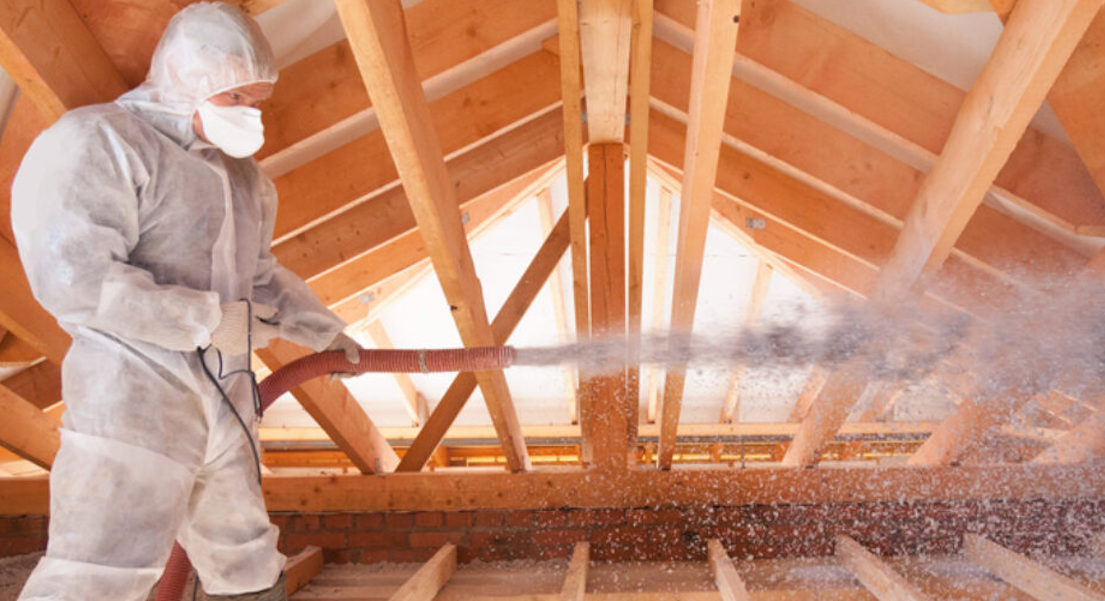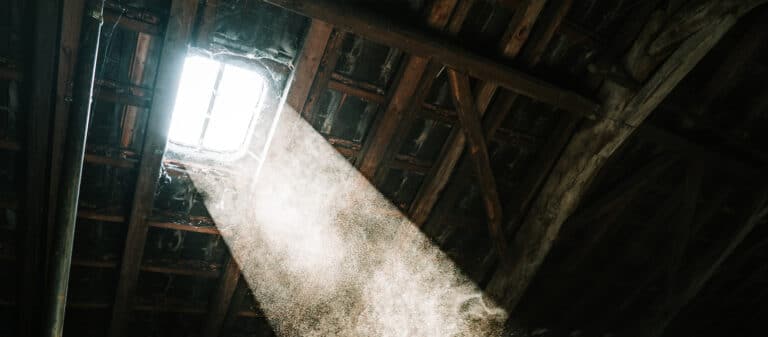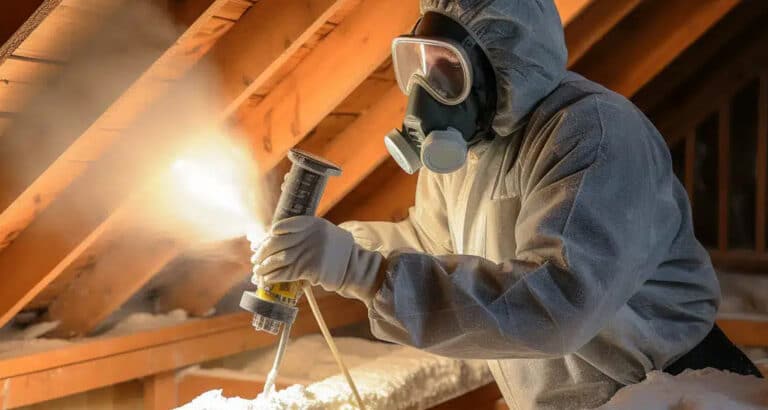People choose to settle down in Northeast Pennsylvania for many reasons, from the beautiful scenery to the affordable housing.
One benefit of living in a remote area within NEPA is the quiet solitude of living outside a major city and in the country.
However, unless your home is soundproof, you’re bound to hear the occasional dog bark, police siren, or passing car in the middle of the night. If you have little children who need to nap or work at night, dealing with outside noise can be frustrating.
And if you live in a populated city like Scranton or Wilkes-Barre, soundproofing can be super valuable for your mental health!
Soundproofing certain rooms in your home, whether to sleep or play loud instruments without disturbing the house, can give you amazing privacy and tranquility you didn’t know you needed.
Most importantly, if you work in an audio-based field, soundproofing your home can deliver better acoustics, improving your recording quality.
If you’re looking to reduce unwanted noise and improve the comfort of your home, here’s everything you need to know about professional soundproofing in Northeast Pennsylvania.
Why Consider Soundproofing Your NEPA Home?
While soundproofing may seem like more of a luxury than an absolute necessity, it can offer many benefits for homeowners, from improved comfort to privacy.
For example, if you work from home, soundproofing can help cut out unwanted noise and help you concentrate and improve productivity.
On the residential side, soundproofing can offer many benefits for homeowners, including:
- Better sleep quality
- Increased privacy
- Better acoustics
- Higher resale value
- Greater concentration
On the commercial side, soundproofing can help employees concentrate and communicate better, reducing the risk of injuries.
If you or your children work with instruments or any audio-based fields, you will instantly notice the difference in acoustic quality when you soundproof a room.
Ways to Make Your NEPA More Soundproof
There’s no one-size-fits-all solution to soundproofing, but the following options can dramatically reduce noise depending on where it originates and how it travels through your home.
1. Upgrade Insulation in Walls and Ceilings
Proper insulation is one of the most effective ways to reduce sound transfer between rooms and floors. Insulation acts as a natural barrier that can block out thermal transfer, allergens, and noise.
For existing walls and ceilings, we recommend a blown-in insulation, such as fiberglass or cellulose. Fiberglass is slightly thicker and better at soundproofing.
However, we recommend a closed-cell spray foam or fiberglass batt combined with air sealing for better soundproofing performance to provide the best resistance and R-value between fixtures.
2. Install Acoustic Drywall or Mass-Loaded Vinyl (MLV)
For improved soundproofing, you can buy direct soundproofing materials manufactured for the very purpose. The most popular materials include:
- Acoustic drywall, such as QuietRock®, incorporates sound-dampening layers that block sound far more effectively than standard drywall.
- Mass-Loaded Vinyl is a dense barrier material that can be added behind drywall or under floors to dramatically reduce both airborne and impact noise.
These materials are ideal for media rooms, home offices, or bedrooms that share walls with noisy areas.
3. Seal Gaps and Cracks
Sound travels easily through even the smallest openings. Professional soundproofers use a combination of spray foam air, acoustic sealants, and backer rods to seal wall gaps, ceiling penetrations, and small gaps between outlets and door frames.
This step is especially important in older homes where settling has caused cracks and separations.
4. Soundproof Floors
Floor noise can be particularly disruptive in two-story homes or apartments. Some common solutions to prevent sound transfer include:
- Adding underlayment with sound-dampening properties beneath the flooring
- Installing carpeting or area rugs with thick pads
- Insulating between floors using cellulose or mineral wool
These strategies help minimize both impact and airborne noise between levels.
5. Upgrade Windows and Doors
Finally, standard single-pane windows and hollow-core doors allow sound to pass through easily. We recommend upgrading to the following materials if you want to truly soundproof a room:
- Double or triple-pane windows with inert gas between the panes for sound isolation
- Solid-core interior doors to block room-to-room noise
- Weather stripping and door sweeps to close sound gaps
Is Professional Soundproofing Worth It?
While DIY options exist, they rarely match the performance of professionally installed systems. As insulation and soundproofing experts, we use a multi-layered approach tailored to your home’s layout, materials, and noise sources.
Here’s how the process typically works:
1. Sound Assessment
We start with an evaluation of your home to identify sound entry points and the type of noise you’re dealing with (impact noise, airborne noise, structure-borne vibrations, etc.). This helps us recommend the right materials and strategies.
2. Material and Strategy Selection
Based on your home’s layout and the type of sound issue, we select from a range of proven materials and techniques, including:
- Blown-in cellulose for dense, eco-friendly sound control
- Spray foam to reduce air leaks and low-frequency noise transmission
- Mass-loaded vinyl (MLV) to add mass to walls and reduce vibration transfer
- Acoustic caulk and sealants to close gaps around outlets, doors, and windows
- QuietRock® acoustic drywall for high-performance wall systems
- Sound-isolating floor underlayment to reduce impact noise between levels
Each solution is designed to work together as a system, delivering better results than using any single product alone.
3. Professional Installation
Soundproofing materials need to be installed with precision to be effective. Our trained installers ensure materials provide tight fits and sealed gaps.
We also integrate soundproofing with your home’s existing insulation and HVAC systems and comply with all local building codes.
Done properly, professional soundproofing adds value to your home, improves comfort, and can even contribute to energy efficiency.
Ready to reduce noise and enjoy more peace at home? Whether you’re looking to soundproof a single room or your entire house, we’re here to help.
Contact us today for a free soundproofing assessment and find out how much difference the right insulation and materials can make.
FAQs
How much does professional soundproofing cost?
Costs vary depending on the size of your home, the rooms being treated, and the materials used. On average, professional soundproofing may range from $1,000 to $5,000 per room. Projects that involve new insulation, acoustic drywall, or floor underlayments tend to be on the higher end.
Does soundproof insulation also help with energy efficiency?
Yes! Many of the materials used for soundproofing, like fiberglass or spray foam, also offer excellent thermal insulation. This means you’ll not only enjoy a quieter home, but also lower heating and cooling costs year-round.
Is it better to soundproof during renovations or after?
Soundproofing is most cost-effective during renovations or new construction, when walls and ceilings are already open. However, we also offer retrofit solutions that can be installed in finished spaces with minimal disruption.











